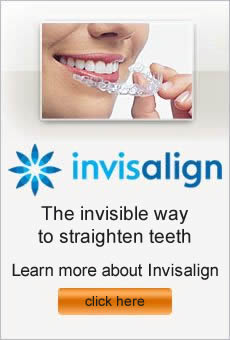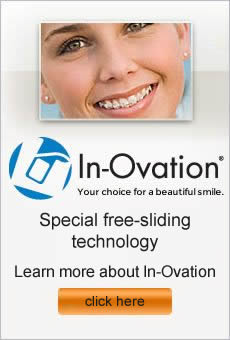Improving your smile through orthodontic treatment can be one of the greatest gifts. No matter what age treatment occurs, the benefits apply to just about any age group. In deciding whether orthodontics might be right for you, it’s helpful to consider the types of problems that treatment addresses.
A consultation with an orthodontist will help you determine what might be wrong with your teeth or jaw, and find out the types of treatments that can offer improvement. One of the most obvious reasons that patients get braces is to straighten crooked teeth, which is only one of the motivations. Gaps between your teeth are another reason. A common problem has to do with a patient’s bite, which can be labeled as maloclussion in a number of ways. You might have an underbite, overbite, or a crossbite. If your smile doesn’t line up properly or your teeth aren’t in the correct positions, orthodontic treatment may be right for you.
Just like every reason for orthodontic treatment isn’t the same, the correction methods are not always the same either. Traditional braces, clear aligning trays, headgear, rubber bands, and retainers are some of the common treatment options. The complete process may take anywhere from just a year to several, depending upon the severity of the issues and the patient’s progress.
As mentioned before, improved self-esteem is one benefit of orthodontics. Others include improved tooth or jaw function, better facial profile, more thorough oral hygiene, speech improvement, better teeth wear patterns, reduced risk of injury or tooth loss, and more.
Whether you are 15 or 52, orthodontic treatment is something that may be considered if you are unhappy with your smile. See an orthodontist to learn if treatment can turn your smile around.
Most orthodontic patients have questions about braces, especially wondering how their lives will be affected by wearing them. Here are some answers to some of the more commonly asked questions regarding life with braces.
Will I be able to talk normally with braces?
- With braces, speech can be affected initially, while your mouth and tongue adjust. Additional appliances such as a palatal expander may interfere with your speech more noticeably, but with time you can learn to speak clearly and properly.
Will it hurt to wear braces?
- You are likely to experience some discomfort for the first week after your braces have been applied. At first, your tongue and cheeks may feel sore from rubbing against the metal parts of the braces. Dental wax is available to smooth over the rough edges until your mouth has grown accustomed to your braces. You will also feel some discomfort following each adjustment of the braces as your teeth begin to move. Take an over-the-counter pain reliever with an anti-inflammatory property, such as ibuprofen, to help with your discomfort.
What foods should I avoid while wearing braces?
- Avoid hard foods or biting on oversized pieces of foods. You may dislodge the bands or brackets, and damage the wires. Avoid eating nuts, biting your nails, or chewing on the ends of pens or pencils. Cut hard fruits into slices before eating them. Avoid sticky foods and candy.
How do I brush my teeth with braces?
- Brushing your teeth while wearing braces is much more challenging than cleaning them normally. Do not leave food particles on your braces, as this can lead to decay and gum disease. Brush your teeth immediately following meals as well as each morning and night. It is prudent to carry your toothbrush with you. You will need to replace your toothbrush often, as brushing over braces causes them to wear out faster.
Schedule your appointment with Sherman Oaks orthodontist Dr. Fotovat today to get answers to any questions you have regarding your live with braces. Don’t let uncertainty hold you back from moving forward with your smile goals.
When considering options for straighter teeth, you may want to look at the benefits of Invisalign versus traditional braces. Answering the question of which treatment is right for you requires consideration of several factors, including your specific dental issues, requirements, and treatment goals. Both braces and Invisalign are designed to straighten teeth while improving your smile and oral health. Here are some contrasts and comparisons you may want to consider when making a decision about the best option for straightening your teeth.
- Invisalign is removable while braces are bonded to your teeth.
- Braces are typically metal, although there are enamel color options. Invisalign is clear, or virtually invisible as the name suggests.
- Braces can be difficult to clean, requiring you to work around brackets and wires. Invisalign trays are easily removed to be rinsed and cleaned.
- Upon completion of treatment, both braces and Invisalign are likely to need an ongoing positioner or retainer.
- Braces can treat more complex orthodontia cases while Invisalign has more limited treatment abilities.
- Treatment with braces includes many food restrictions to keep from damaging the brackets and wires. Because you remove the Invisalign trays when eating, there are no restrictions to what you can eat or drink.
- For maximum treatment success, with Invisalign you must be vigilant about wearing the trays a minimum of 22 hours per day. Braces are bonded to your teeth so there is no need to worry you may forget to wear your appliance.
In comparing braces to Invisalign, it is important to determine your particular needs and consult with your orthodontist to decide which will meet those needs in the best way to achieve your treatment goals.
Dr. Fotovat is a top Invisalign orthodontist in Sherman Oaks CA
A dentist is a licensed healthcare professional whose career focuses on helping patients maintain a healthy smile by preventing diseases that affect the teeth and gums, extracting teeth, filling cavities, and inserting artificial teeth. Unlike dentists, orthodontists obtain an additional two to three years of education and primarily focus on oral alignment and positioning.
Here are some common treatment options that orthodontists employ to help patients achieve a more appealing and functional smile.
- Traditional metal braces – Metal braces have the ability to align crowded, crooked, or unevenly spaced teeth. They can correct overbites, underbites, and additional misalignments. Metal braces continue to be a popular choice for orthodontic candidates because they are very resilient, effective, and may be cost-effective compared to some of the newer styles of braces.
- Ceramic braces – Ceramic braces, also known as clear braces, are much less visible than metal braces. Ceramic braces realign the teeth and bite just as effectively as metal braces.
- Invisalign – Invisalign uses cutting edge technology to help straighten teeth often without anyone knowing you have braces. Invisalign uses aligner trays that correct teeth without using brackets, metal wires, or rubber bands. The aligner trays are made of a smooth, clear plastic material specifically shaped to fit over the teeth. The trays are practically impossible to notice, and are removable for eating and cleaning.
- Lingual braces – Lingual braces, also called incognito braces, give the desired results using custom-made wires and brackets that are specifically created for each individual tooth. Brackets and wires are then attached only to the backs of the teeth, providing a virtually invisible appearance.
- Self-ligating braces – Self-ligating braces are comprised of brackets that contain “sliding doors” to hold the wires in place. Self-ligating braces can provide results as effectively as other types of braces, and there are longer gaps between adjustments since the wires are changed less often as metal braces.
Burbank orthodontist
You may have noticed that some kids begin orthodontic treatment at a young age, and others don’t begin until their teen years. The answer is that each patient is different, and the exact reasons your child needs braces will differ from other kids. Any way you look at it, you and your orthodontist will likely share the same goals for your child of a beautiful smile, healthy teeth, and confident attitude. Wearing braces can often help achieve those goals.
Reasons for braces
There are a variety of reasons that kids can benefit from braces. They straighten overlapping teeth or move crowded teeth to achieve the best alignment. Underbites, overbites, and other problems related to how the teeth fit together can also be corrected. Jaw problems and palate issues may be addressed so that the teeth fit better in the mouth.
When to get braces
Many factors contribute to an orthodontist’s recommendation as to when your child might benefit most from treatment. Most experts advise an initial orthodontic screening around age seven, when permanent teeth start erupting. Sometimes early intervention is helpful with young children to guide the teeth, palate, and jaw during growth. Palate expanders are an example of treatment that should be done early for the best results. Early intervention isn’t recommended for all kids, because some issues must be addressed after growth is complete. Your orthodontist can identify any problems that might be treated and suggest the ideal timing for correcting them.
What braces mean for your child
Even though braces are very common among young people today, your child may still have some hesitations about treatment. Appearance is a normal concern, but there are new technologies such as Invisalign or clear braces that are less obvious than traditional braces. Fun, colorful bands may be enough to entice some children to embrace the look instead of fear it. Playing musical instruments is possible for kids with braces, and participating in sports is also acceptable as long as your child wears a mouth guard for protection.
Kids orthodontist in Sherman Oaks CA
It’s a big commitment to get braces, so you want to be as educated as possible before taking this step. Here are some important things to know before going to the orthodontist for the first time.
Braces are more than just cosmetic.
Although the goal for many people in getting braces is to achieve perfectly straight teeth, that’s not the only advantage to orthodontic treatment. The appearance of your smile may be the first thing others may notice, but braces can also improve the alignment of your jaw and bite. Serious problems and pain can result from misalignment, as well as difficulties in cleaning overcrowded teeth.
Braces aren’t just for teenagers.
Often associated with adolescence, braces are no longer only popular with this younger age group. It has become a common solution for adults who want to straighten their teeth and improve their bite. Braces can improve your smile at nearly any age.
Consultations are usually free.
The first step in considering treatment is making a consultation appointment with an orthodontist. Your teeth and jaw will be examined, and any treatment options will be presented. Consultations are usually free, so visit several specialists to find the right one for you.
Treatment and costs vary.
Don’t rule out braces because you’re afraid of the cost or the length of treatment. Your specific case is unique to you, and both treatment and financial commitment vary from patient to patient.
Braces don’t hurt as much as you might think.
A common concern about braces is the amount of pain involved. You can expect some discomfort at first and after each adjustment, but the pain is typically short-lived and manageable.
Orthodontist in Sherman Oaks CA



